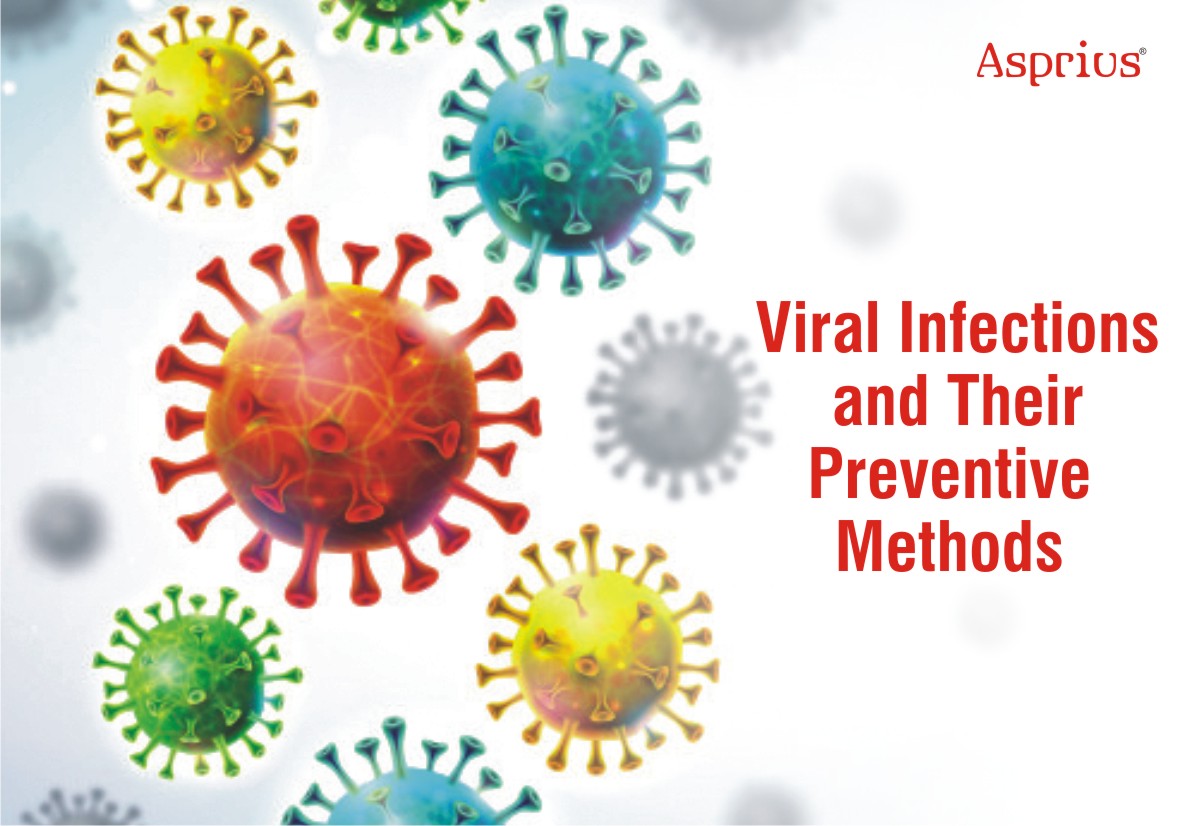
Dr. Sanjay Agrawal
Leading Pharmaceutical consultant and editor-in chief of IJMToday


What Is a Virus?
Viruses are microorganisms or small genetic material (either DNA or RNA) that are coated by a protein coat. They are coated with an “envelope” covering. They are not able to reproduce their clones. Viruses depend on host and infect them for their survival. Moreover, they search for other host organisms for their life span, including humans, plants, animals, and the environment. Some of them also protect their host from other infections. Viruses area is also crucial in the evolution of genetic processes among different species. As per the research study, viruses are used to place new genes into host cells.
The word “virus,” referred to disease-causing pathogens such as influenza, common cold, human immunodeficiency virus, SARS-CoV-2, and recently trading COVID-19. Viruses can infect the body parts, such as the reproductive system, respiratory system, nervous system, gastrointestinal systems, and urinary system. Apart from this, the viral infection is prevalent in body parts such as the liver, lungs, skin, and intestine. As per the research study, it has been found that viruses are also involved in most cancer cells.
Do You Know about Viral Infection?
A viral infection is the multiplication of a harmful virus inside the host cells. A host cell is essential for viral infection. Viruses introduce their genetic material to host cells and highjack that host cells. Moreover, in the viral infection, they start making their copies in the host cells and burst them. Slowly and gradually, host cells start dying and infect the host body. Symptoms of viral infections are cell damages, tissue damages, and also disturb the immune response.
Viruses are of two types DNA and RNA.
RNA viruses include retrovirus; they are potent to mutate, for example, HIV. Some viruses infect the liver, such as hepatitis B and hepatitis C. Moreover, some viruses do not kill the host cells, but they mutant the host cells.
Some viruses spread the infection in one particular cell type, such as in common cold, viruses affect the only upper respiratory tract.
Are viruses Living Organism?
Microbiologists disagree with this statement, but few scientists say they live things and give such ideas about viruses.
- They replicate themselves with the help of host cells.
- They gain energy from their host.
A microbiologist who believes viruses is not living things.
- They are not made up of cells.
- Only the protein coat is around the cells.
- They do not reproduce their clones by itself.
Are Viral Infections Contagious?
Viral infections are generally contagious. It depends on the type of virus. An incubation period of a virus refers to exposure to a virus and the types of symptoms.
The infectious period of a virus is completely different from the incubation period.
Is it a Bacterial or Viral Infection?
The pathophysiology of Viruses and bacteria are completely different from each other. They both are pathogenes and causes of a few diseases. Apart from these, a few bacterias and viruses are suitable for their host cells and prevent the body from unwanted infection. Bacterias are more significant than viruses and reproduce without also. On the other hand, viruses need the support of their host to replicate. A doctor or pharmacist can determine the causes of disease based on the patient’s symptoms. He or She can determine the causes of diseases, whether they are viruses or bacterias, with the help of a lab test.
Virus Transmission
Viruses can spread in multiple ways. A few viruses can spread through touch, saliva, or even the air. Moreover, viruses can be transmitted through one healthy sexual contact with another one. It can spread through contaminated needles. Insects are also one way to communicate the virus, including flies and mosquitoes are “vectors,” transmitting a virus from one host to another. Contaminated food and water are some of the excellent ways of viral infection.
Respiratory Viral Infections
Respiratory viral infections are the most infectious viral infection. It infects the upper respiratory tract, including the lungs, nose, and throat. The spread of these
- Viruses are via droplets. examples are including the common cold, but more than 200 different viruses can cause colds. Cold symptoms, including coughing, sneezing, mild headache, fever, and sore throat, typically last for up to 3 weeks.
- Seasonal influenza is a viral infection that affects about 5% to 20% of the U.S. population every year. As per data, 200,000 people per year are hospitalized annually in the U.S. due to seasonal influenza complications. Flu symptoms are more complicated than cold symptoms and often include body aches, fever, and extreme fatigue.
- Respiratory Syncytial Virus (RSV) is an infection of both the upper and lower respiratory tract. It can cause upper respiratory illnesses such as colds and lower respiratory infections (like pneumonia and bronchiolitis). This disease can infect infants, small children, and elderly adults.
- SARS-COV-2 is a global pandemic of respiratory coronavirus that causes COVID-19 infection. The first case of COVID-19 has been reported in Wuhan city of China. It has announced a worldwide epidemic in 2020, shutting down schools, businesses, and public life in nations across the world. Moreover, COVID-19 infects millions of people. The death rate of this illness over 1 million worldwide and 210,000 in the U.S. Symptoms of this pandemic include cough, fever, shortness of breath, and pneumonia.
The preventive measures are recommended through WHO, such as repeated hand-washing, covering the nose and mouth when coughing or sneezing, and avoiding contact with infected individuals to reduce the spread of respiratory infections.
You can prevent yourself by wearing a mask when going out with friends. There may be chances of decreasing the chances of getting viral infections such as the influenza flu and COVID-19.
Viral Skin Infections
Viral skin infections come under the mild to severe species, and sometimes skin viruses produce a rash on the body parts. Examples of viral skin infections are given below:
- Molluscum contagiosum causes small, flesh-colored lessons most often in children ages 1 to 10 years old; however, people of any age can acquire the virus. The lumps usually disappear without treatment, usually in 6 to 12 months.
- Common cold spreads through the Herpes simplex virus-1 (HSV-1). It is spread from one healthy person to another through saliva by kissing or sharing food or drink with an infected individual. Sometimes, HSV-1 causes genital herpes. An estimated 85% of people in the U.S. are suffering from HSV-1 by the time they are in their 60s.
- Varicella-zoster virus (VZV) is responsible for itching, oozing blisters, extreme fatigue, chills, and high fever are the common symptoms of chickenpox. The chickenpox vaccine is 97% effective at preventing infection. People who have had chickenpox (or in sporadic instances, people who have received the chickenpox vaccine) are at risk of developing shingles.
If you want to avoid viral skin infections, avoid skin-to-skin contact (especially areas with a rash or sores) with an infected individual. A few examples of viral skin infections include the varicella-zoster virus and transmitted through communication with the infected one. Community park showers, swimming pools, and contaminated towels can also potentially spread certain diseases.
Viral Food Poisoning
Viruses are one of the most famous causes of gastrointestinal illness. The symptoms of the disease depend on the type of viruses involved.
- Hepatitis A is a virus that infects the liver for 1-2 weeks. Common symptoms of these viruses include yellow skin, nausea, diarrhea, and vomiting. Up to 20% of infected individuals experience recurrent illness within six months of disease.
- Norovirus is a common virus reported to be responsible for the severe gastrointestinal illnesses on cruise ships
- Any healthy person can get infected with rotavirus, but the infection occurs most commonly in children.
Rotaviruses and noroviruses can infect the GIT tract for many (but not all) viral gastroenteritis cases, responsible for the inflammation around the stomach and intestine.
It’s not pleasant to think about it, but food borne viral illnesses cause infection via the fecal-oral route as well. It states that a healthy person gets infected with a viral infection by ingesting virus particles that were shed through an infected person’s feces. Someone with this type of virus who doesn’t wash their hands after using the restroom can transfer the virus to others by shaking hands, preparing food, or touching hard surfaces. Contaminated water is another potential source of infection.
Viral Infections and STIs
Sexually transmitted viral infections infect the healthy one through contact with bodily fluids, which release from sexual parts, e.g., sperm of a man can infect the female partner. Some sexually transmitted diseases can also spread blood (blood borne transmission).
- Human papillomavirus (HPV) is the most common sexually-transmitted infection in the U.S. There are many different types of HPV. Some cause genital warts, while others increase the risk of cervical cancer. Vaccination can protect against cancer-causing strains of HPV.
- Hepatitis B is a virus that causes inflammation in the liver. It’s transmitted through contaminated blood and bodily fluids. Some people with the virus don’t have any symptoms, while others feel like they have the flu. The hepatitis B vaccine is more than 90% effective at preventing infection.
- Genital herpes is a common sexually-transmitted infection caused by herpes simplex virus-2 (HSV-2). Herpes simplex virus-1 (HSV-1), the virus responsible for cold sores, can sometimes cause genital herpes. There’s no cure for genital herpes. Painful sores often recur during outbreaks. Antiviral medications can decrease both the number and length of attacks.
- Human immunodeficiency virus (HIV) is a virus that affects specific T cells of the immune system. Progression of the infection decreases the body’s ability to fight disease and condition, leading to acquired immune deficiency syndrome (AIDS). HIV is transmitted by contacting the blood or bodily fluids of an infected person.
People can reduce the risk of getting a sexually-transmitted viral infection by abstaining from sex or only having sex while in a monogamous relationship with someone who does not have a sexually-transmitted disease. Using a condom decreases, but doesn’t eliminate, the risk of acquiring a sexually-transmitted infection. Minimizing the number of sexual partners and avoiding intravenous drug use are other ways to reduce the risk of contracting sexually-transmitted and bloodborne viral diseases.
Other Viral Infections
Viruses are present around us and cause life-threatening viral infections ranging from low to life-threatening.
- Epstein-Barr virus (EBV) herpes virus is associated with fever, fatigue, swollen lymph nodes, and an enlarged spleen. EBV is a ubiquitous virus that can cause mononucleosis. More than 90% of adults have been infected through “kissing disease” spread primarily through saliva.
- West Nile virus (WNV) is a virus that’s most commonly transmitted by infected mosquitos. Most people (70% to 80%) with WNV don’t have any symptoms, while others develop a fever, headache, and other symptoms. Less than 1% of people with WNV develop inflammation of the brain (encephalitis) or inflammation of the tissue surrounding the brain and spinal cord (meningitis).
- Viral meningitis is an inflammation of the brain’s lining and spinal cord, causing headaches, fever, stiff neck, and other symptoms. Many viruses can cause viral meningitis, but a group of enteroviruses is often to blame.
Antiviral Drugs and Other Treatment for Viral infection.
Many viral infections cure on their own without medical help. But a few viral infections need vaccination. The prevention of viral infections focuses on symptom relief, not fighting the virus. For example, cold medicine helps alleviate the pain and congestion associated with the cold, but it doesn’t act directly on the cold virus.
A few antiviral medications are prescribed for viral infection. They inhibit the production of new virus particles. This group of drugs helps to stop the production of viral DNA. Others prevent viruses from entering host cells. There are other ways of working with these medications work. In general, antiviral drugs are most effective when taken early on in initial viral infection or a recurrent outbreak. Different antiviral medications may be used to treat chickenpox, shingles, herpes simplex virus-1 (HSV-1), herpes simplex virus-2 (HSV-2), HIV, hepatitis B, hepatitis C, and influenza.
Viruses and Cancer
Viruses insert themselves into host cell DNA to make more virus particles. Cancer is a life-threatening disease that occurs as a result of mutations or breaking of DNA. Because viruses infect the DNA of healthy host cells, viruses contribute to several different types of cancer. Viruses increase the chances of cancer include:
- Epstein-Barr virus (EBV) responsible for nasopharyngeal cancer.
- Burkitt lymphoma, Hodgkin’s lymphoma, and stomach cancer
- Hepatitis B and hepatitis C for liver cancer
- Human immunodeficiency virus (HIV) for Kaposi sarcoma, invasive cervical cancer, lymphomas, and other cancers
- Human T-lymphotropic virus-1 (HTLV-1) for T-cell leukemia/lymphoma (ATL)
- Human papilloma virus (HPV) for cervical cancer
- Merkel cell polyomavirus (MCV) for rare skin cancer called Merkel cell carcinoma.
Viral Illness Prevention
Vaccination on time can reduce the chances of acquiring some viral infection. Vaccines are made up to prevent viral infection, including the flu, hepatitis A, hepatitis B, chickenpox, herpes zoster (shingles), cancer-causing pathogens of human papilloma virus (HPV), measles/mumps/rubella (MMR), polio, rabies, rotavirus, and other viruses.
Vaccines are coming under various categories that are effective and in the number of doses required to confer protection. Some vaccines are essential to require booster shots to maintain immunity.




